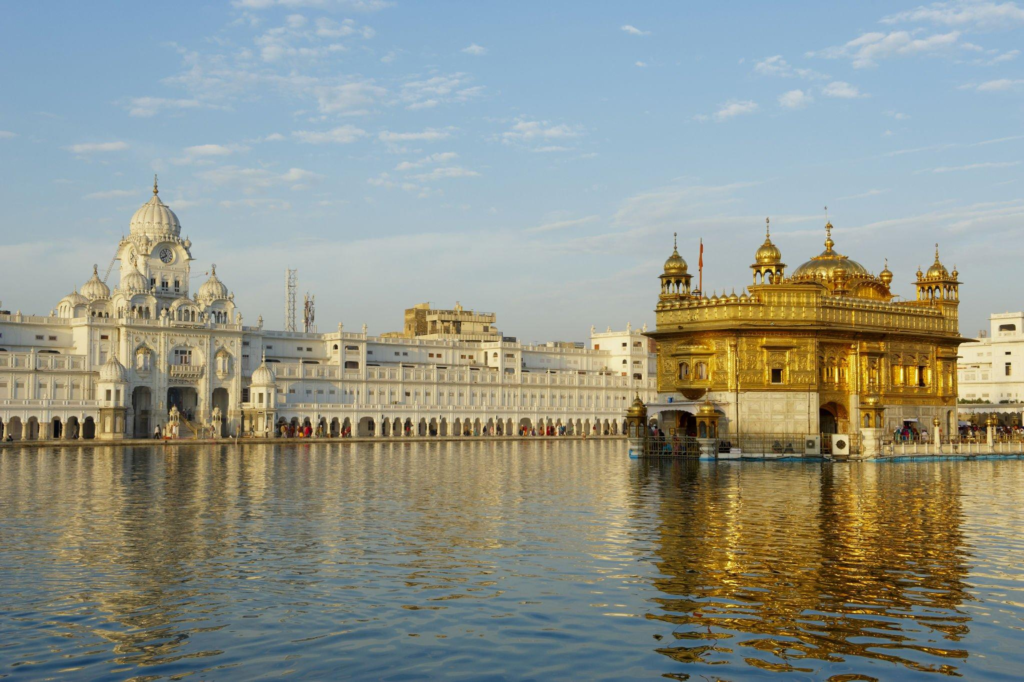Punjab, located in the northwestern part of India, is a state synonymous with rich cultural heritage, lush green fields, and a history that has shaped the course of Indian civilization. Known as the “Land of Five Rivers,” Punjab derives its name from the Persian words “panj” (five) and “ab” (water), referring to the rivers Sutlej, Beas, Ravi, Chenab, and Jhelum that once flowed through the region. Today, it stands as a symbol of resilience, prosperity, and cultural richness.
Geography and Climate
Punjab is bordered by Jammu and Kashmir to the north, Himachal Pradesh to the northeast, Haryana to the south, and Rajasthan to the southwest, with Pakistan to its west. The state’s fertile plains, irrigated by the rivers Sutlej and Beas, are ideal for agriculture, earning it the title “Granary of India.”
The climate varies from hot summers to cold winters, with a monsoon season providing crucial rainfall for crops. This diverse climate supports the cultivation of wheat, rice, sugarcane, and other crops, making Punjab a cornerstone of India’s agricultural economy.
Historical Significance
Punjab has been at the crossroads of ancient civilizations and has witnessed the rise and fall of empires. It was the cradle of the Indus Valley Civilization, one of the world’s oldest urban cultures. Later, it became a vital part of the Maurya, Gupta, and Mughal empires.
The state played a pivotal role in India’s struggle for independence, with many freedom fighters like Bhagat Singh, Udham Singh, and Lala Lajpat Rai hailing from this region. Post-independence, Punjab was divided into the present-day states of Punjab, Haryana, and Himachal Pradesh in 1966, following linguistic lines.
Cultural Heritage
Punjab is a treasure trove of cultural diversity, with its traditions deeply rooted in music, dance, art, and cuisine:
- Music and Dance:
Punjab is the birthplace of Bhangra and Gidda, high-energy folk dances that celebrate life. The state is also known for its soulful music, including Gurbani Kirtan and Punjabi pop, which has gained global recognition. - Cuisine:
Punjabi food is famous worldwide for its robust flavors. Staples like Makki di Roti and Sarson da Saag, along with dishes like Butter Chicken, Paneer Tikka, and Lassi, are culinary delights that reflect the state’s rich agricultural roots. - Festivals:
Punjab celebrates festivals with great enthusiasm. Baisakhi, marking the harvest season and the founding of the Khalsa, is one of the most important. Other festivals like Lohri, Diwali, and Guru Nanak Jayanti bring people together in celebration. - Art and Literature:
The state has a vibrant tradition of folk art, including Phulkari embroidery and Punjabi Tappe. Its literature, with poets like Waris Shah, Amrita Pritam, and Shiv Kumar Batalvi, offers profound insights into love, life, and human emotions.
Economic Significance
Punjab is one of India’s most prosperous states, driven by agriculture, industry, and trade. Known as the “Breadbasket of India,” it contributes significantly to the country’s grain production. The Green Revolution in the 1960s transformed Punjab into an agricultural powerhouse.
In addition to farming, Punjab has a growing industrial sector, including textiles, pharmaceuticals, and automotive manufacturing. Cities like Ludhiana are hubs for small-scale industries, while Amritsar, with its Golden Temple, is a major tourist destination.
Tourist Attractions
Punjab offers a plethora of attractions that reflect its rich history and spiritual essence:
- Golden Temple (Amritsar): A symbol of Sikh spirituality and architectural brilliance.
- Jallianwala Bagh: A poignant reminder of India’s freedom struggle.
- Wagah Border: Known for the ceremonial flag-lowering ceremony between India and Pakistan.
- Anandpur Sahib: A significant Sikh pilgrimage site.
- Patiala: Famous for its royal heritage, including the Qila Mubarak and the Patiala Peg.
Social Fabric and Modern Challenges
Punjab’s society is known for its warmth, hospitality, and communal harmony. However, the state faces challenges such as:
- Agricultural Stagnation: Over-reliance on wheat and rice, coupled with depleting groundwater levels, poses a threat to sustainability.
- Drug Abuse: The state has been grappling with the issue of substance abuse among its youth.
- Economic Diversification: There is a growing need to reduce dependence on agriculture and promote industrial and service sectors.
Conclusion
Punjab, with its vibrant culture, historical legacy, and economic significance, continues to hold a unique place in India’s heart. While the state faces modern challenges, its spirit of resilience and innovation offers hope for a brighter future. By embracing sustainable practices and leveraging its cultural heritage, Punjab can maintain its legacy as a land of prosperity and pride.
